Ah’ah Laot: People Of The Sea – Climate Change Impacts To The People Of Tigtabon Island
Text & Images By Kathleen Lei Limayo
“Before, the sea was still 50 meters away from our houses even during high tides. Now, the sea is only 35 meters away from the shore.” – Jimmy Manglabi (Fisherman and seaweed farmer)
Tigtabon is an island barangay in Zamboanga City located in Mindanao, south of the Philippines. It has a total land area of 267,452 square meters and a population of 3,817 as of the 2015 census. Among the inhabitants of the Tigtabon island are the Sama Badjao indigenous peoples who are loosely called “sea people” or “sea nomads” because of their boat dwelling lifestyle. 1, 2
The livelihood and culture of indigenous coastal communities like the Sama Badjao people of Tigtabon are at risk because of climate change. According to the 2017 Philippine Climate Change Assessment, coastal communities in the Philippines are vulnerable to key climate-hazards: sea level rise, shifting water budget, monsoon rains, and sea surface temperature. The report also state that the Philippines will be greatly affected by the 51% reduction of its coastal wetland area under the 2 degrees warming by 2100. 3
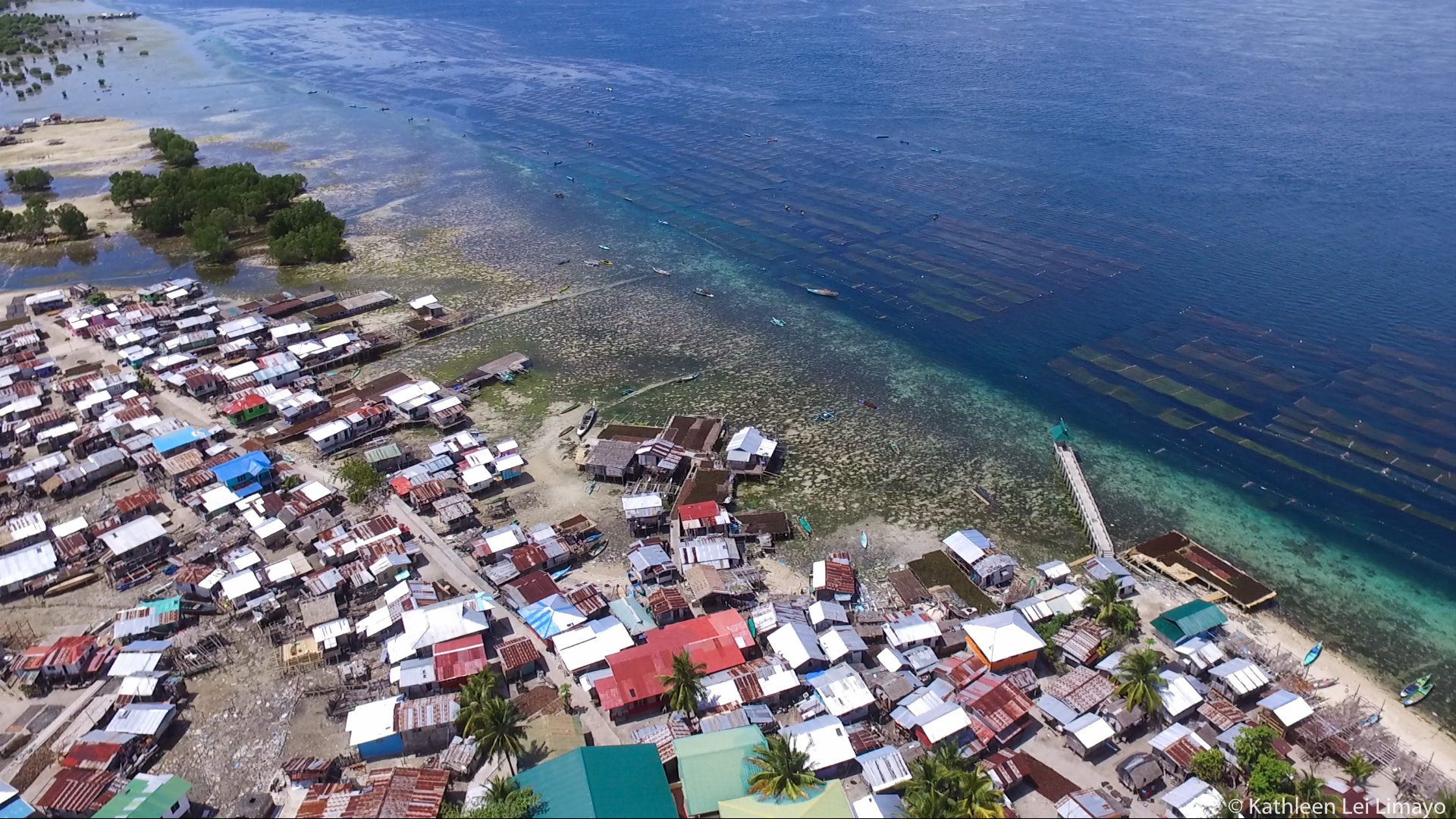
Aerial photo of the Tigtabon Island, Zamboanga City, Philippines.
Watch the documentary
Climate-related health risks
Increased sea surface temperature directly affects the livelihood of coastal communities. Extreme heat during the day impede livelihood activities of fisherfolk who decide to stay indoor. Heat-related illnesses (sunstroke, sunburn, heat exhaustion and dehydration) are projected to affect the health of Filipino fishermen due to climate change. 6
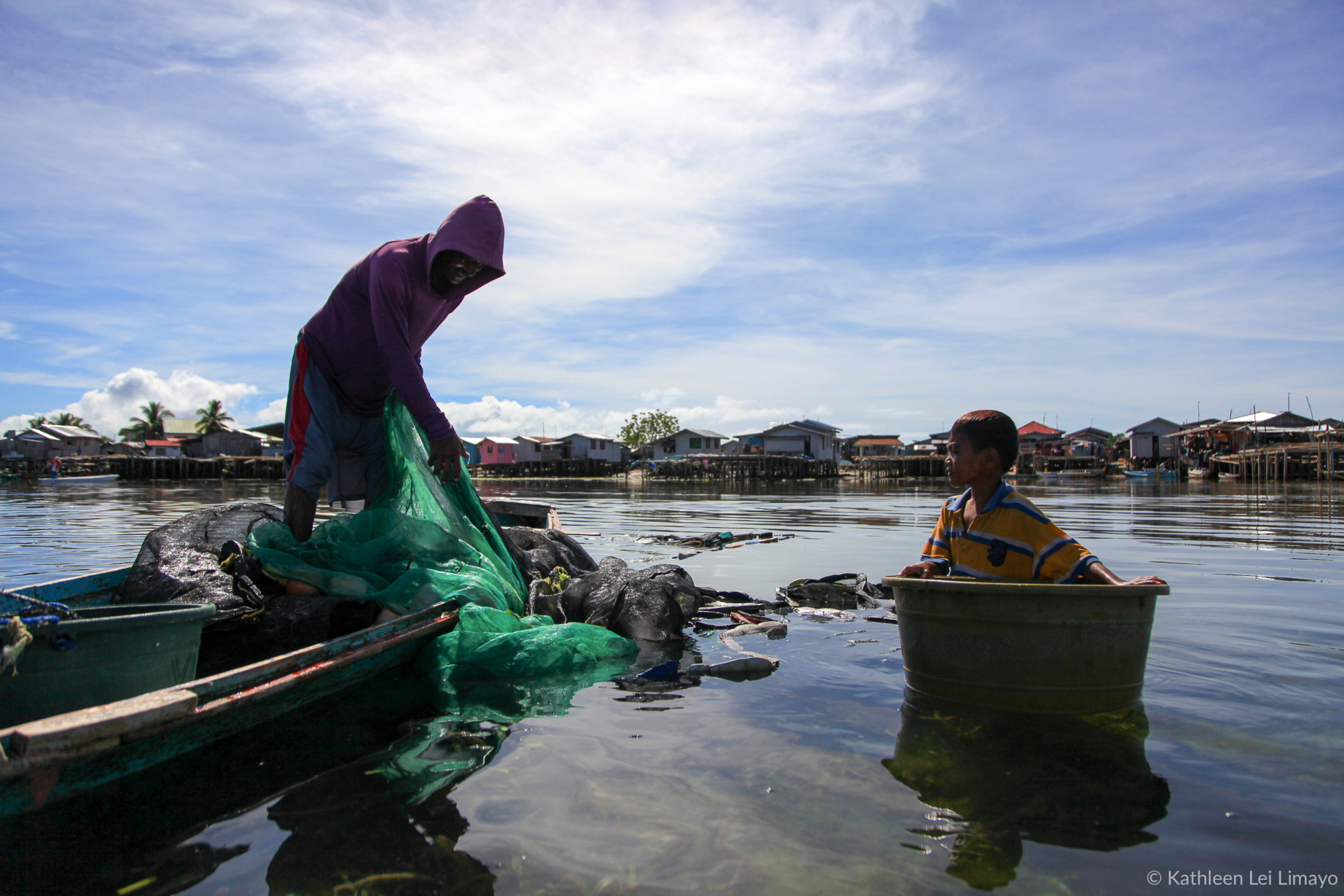
A father and son doing shallow net fishing.
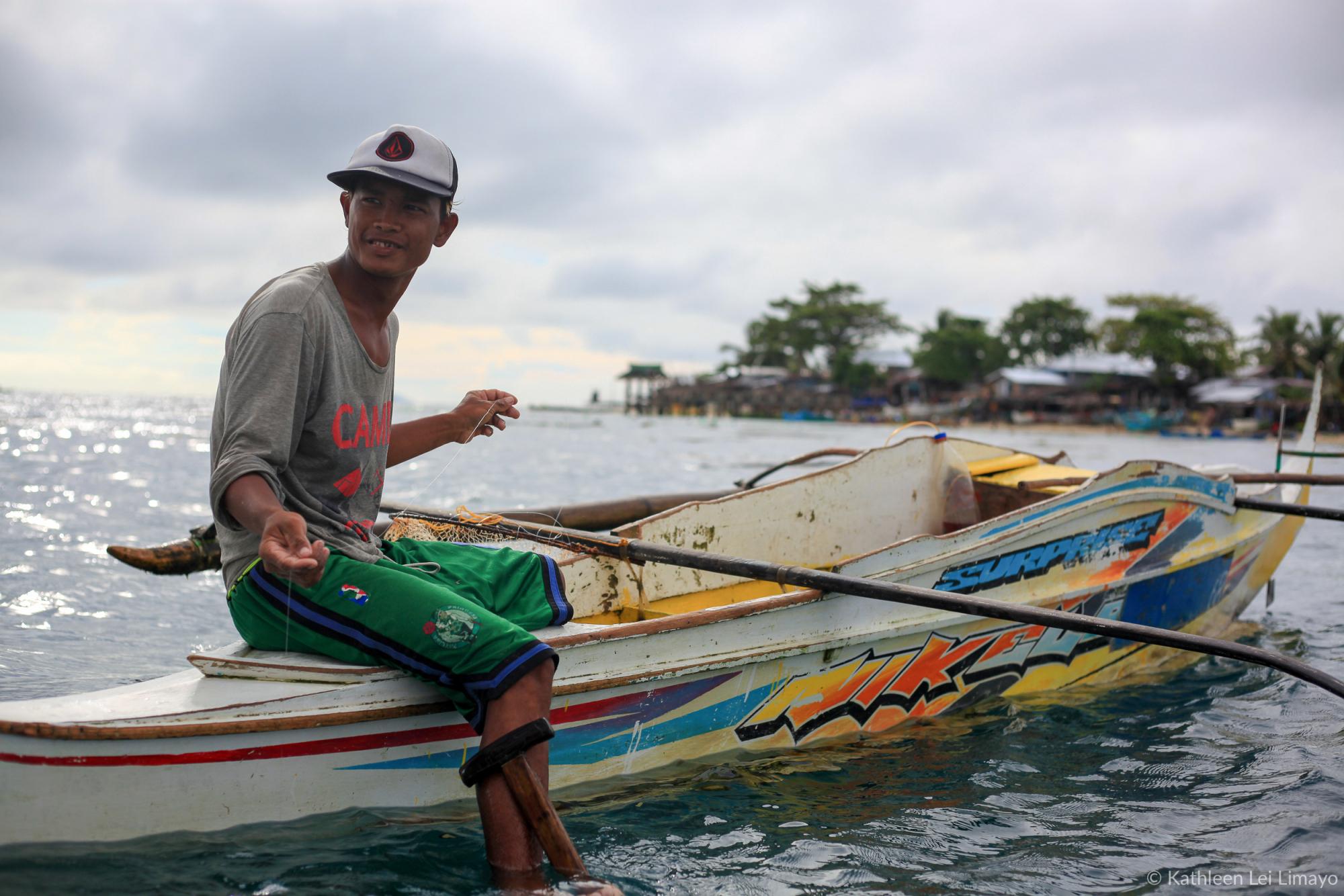
A fisherman uses hook-and-line to catch some fish near Tigtabon island.
“Before, even when it was hot,
we still went to catch some fish.
But these past few years have been really hot.
When we can no longer endure the heat,
we just decide to go home.”
– Jimmy Manglabi (Tigtabon fisherman and seaweed farmer)
Impacts to fishing
Located in the Western side of the Pacific, the Philippines is naturally exposed to typhoons and storm surges. Increased occurrence of stronger tropical typhoons lead to greater loss in fishing, thus jeopardizing coastal communities’ livelihood and economy.7
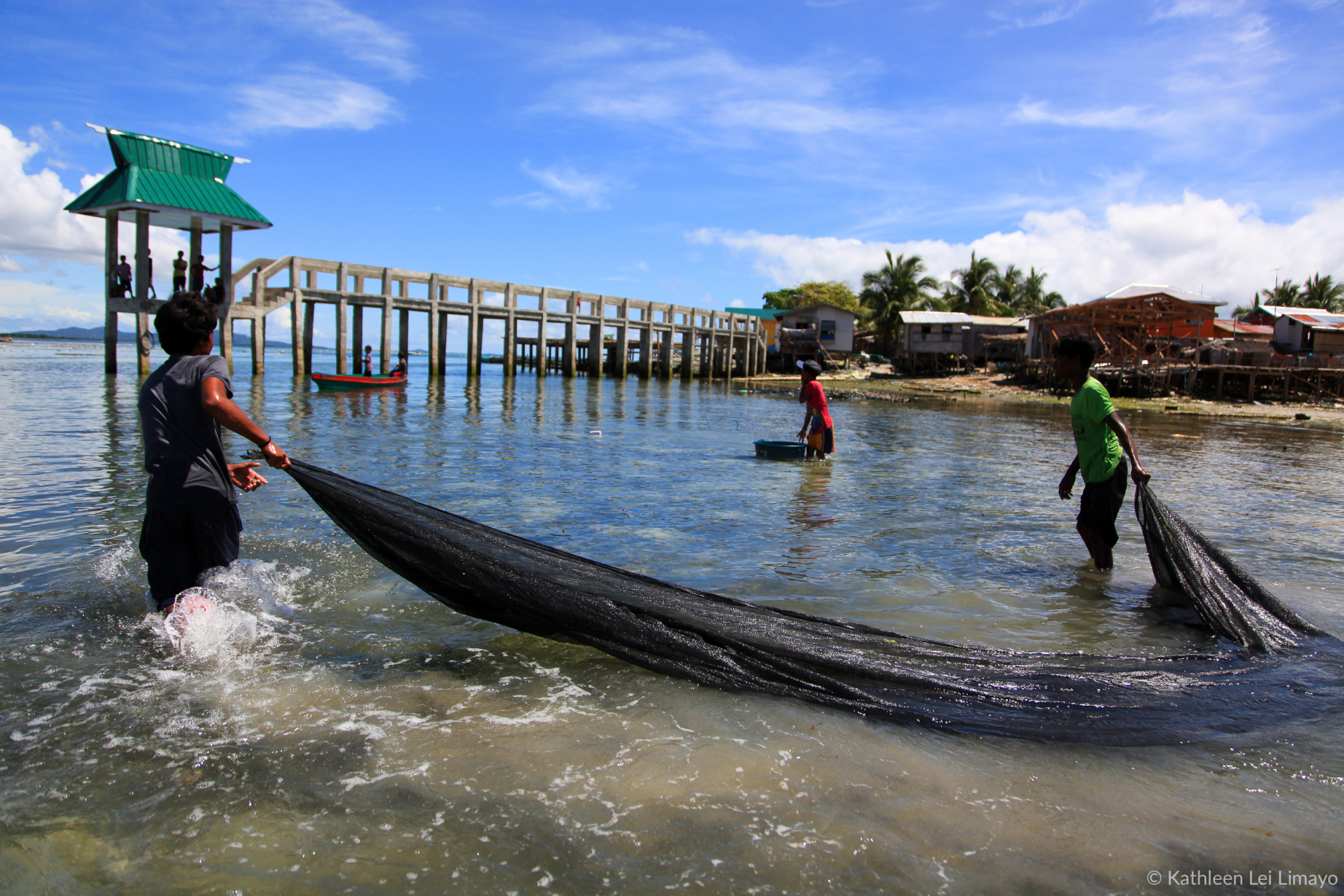
A group of teens use a shallow net to catch fishes at the port of Tigtabon island.
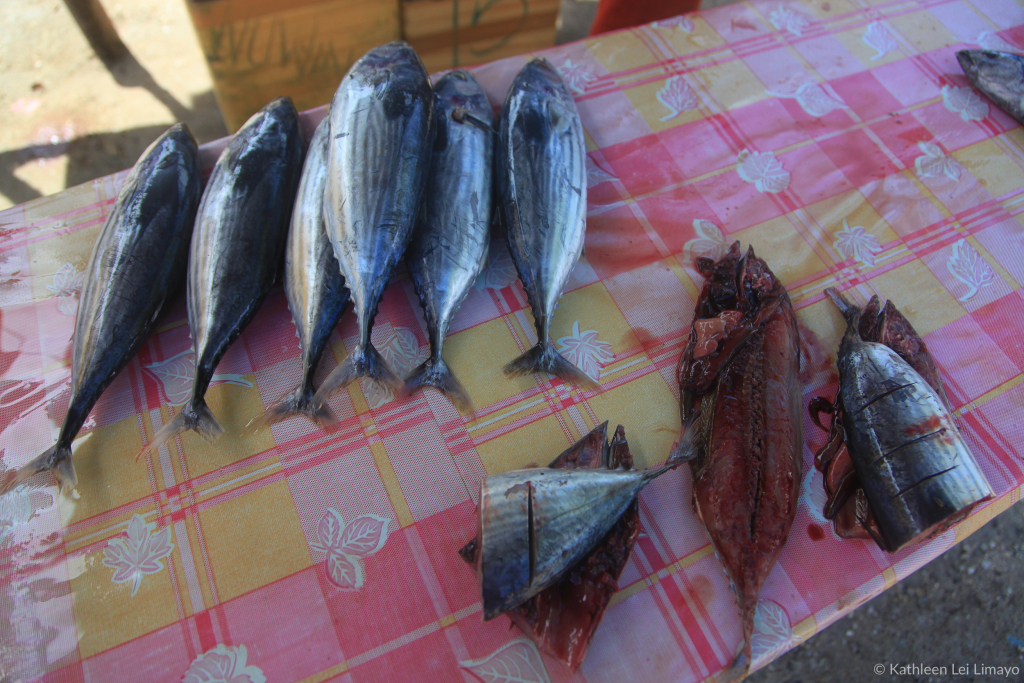
Fishes sold at a local market in Tigtabon island.
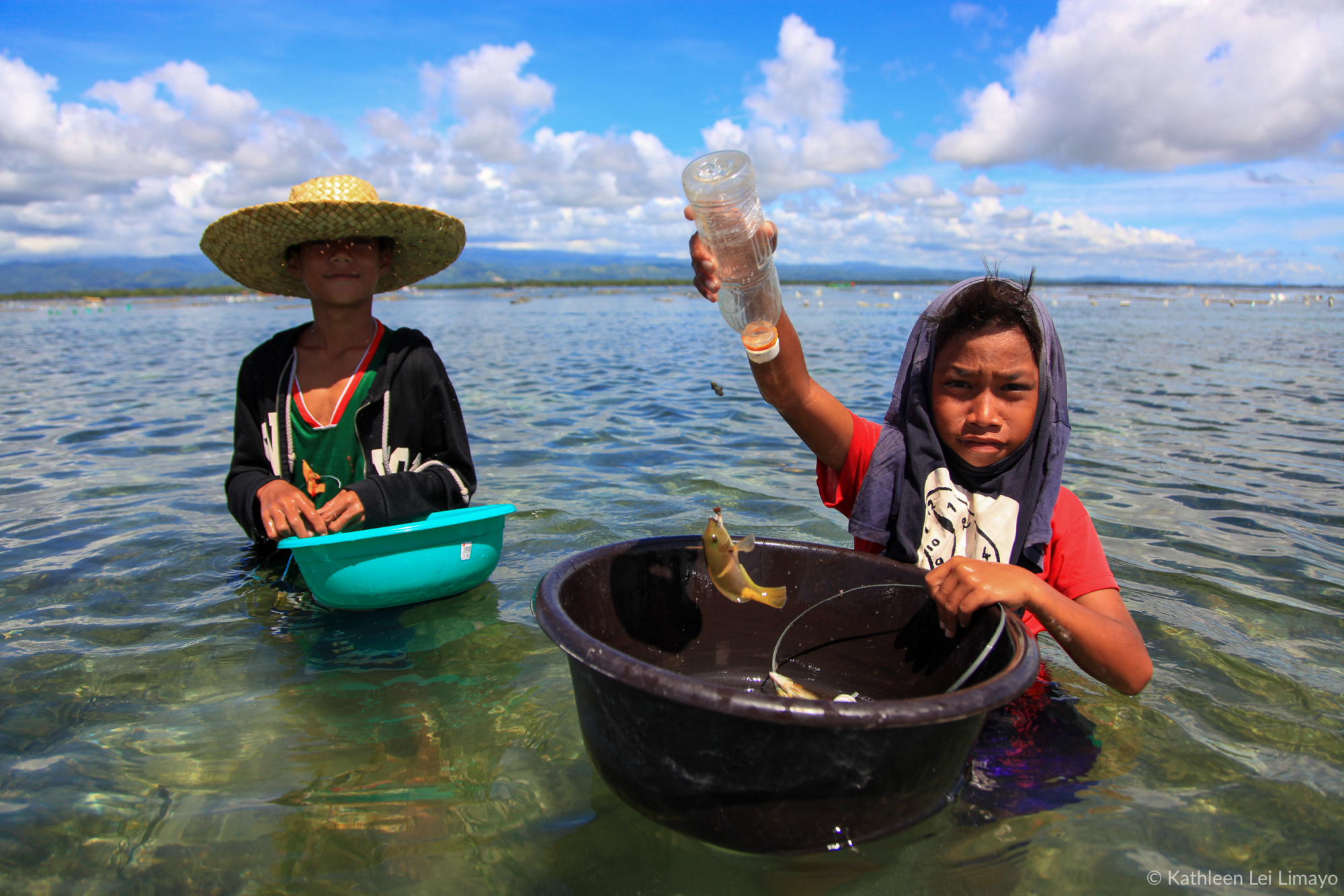
A boy displays a small fish he caught using his DIY hook-and-line.
Impacts to seaweed farming
Seaweed farming serves as an alternative source of income for the residents of Tigtabon island. Harvested seaweeds are normally sold for about 50 Philippine Pesos (1 USD) per kilo. Warming seas affect both fisheries and seaweeds production. Saadiya Manglabi, a resident of Tigtabon and seaweed farmer, expresses her concern over the effects of extreme heat to their seaweeds. The frequency of strong tropical cyclones endanger seaweed production.
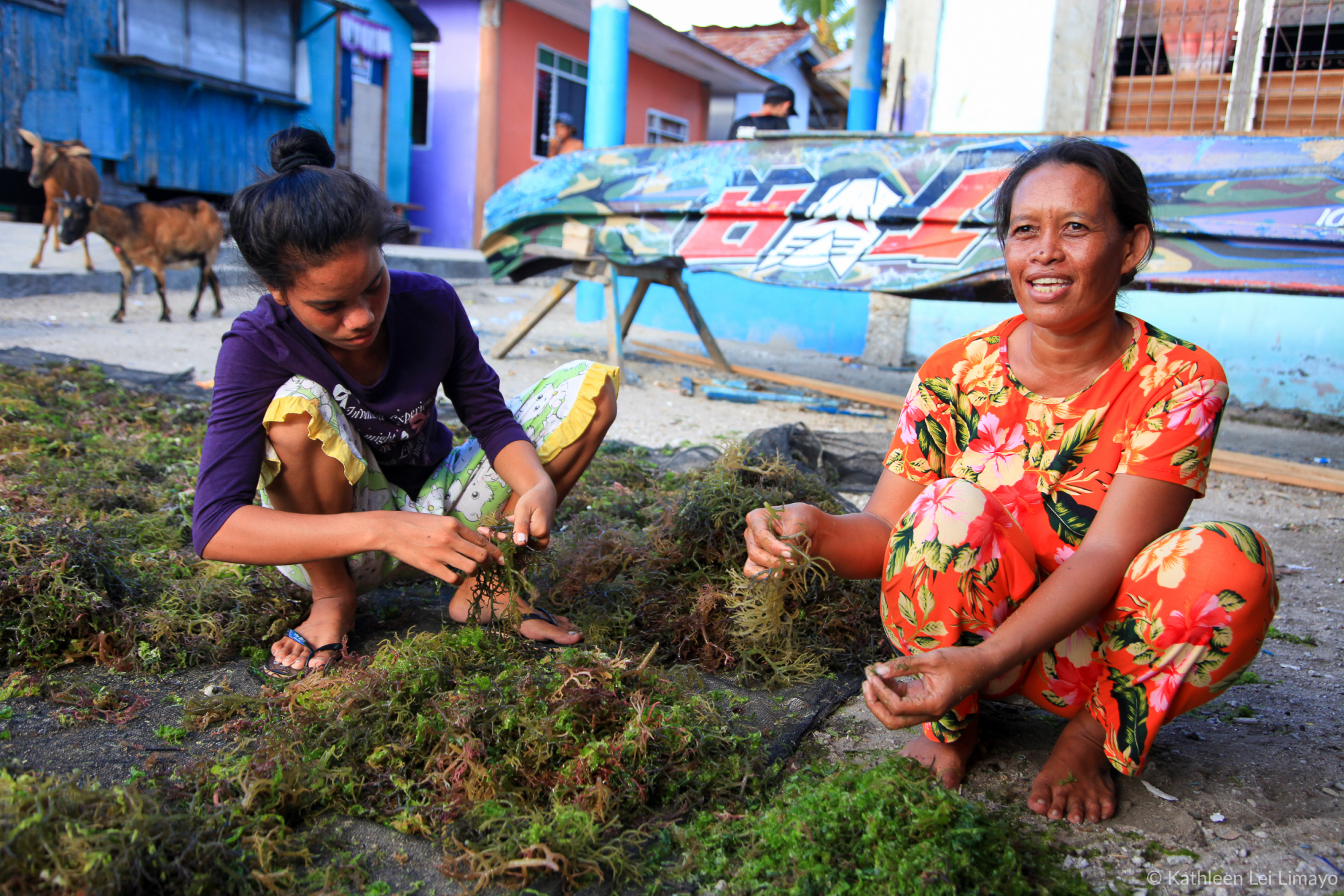
Saadiya and her daughter prepares the seaweeds for drying.
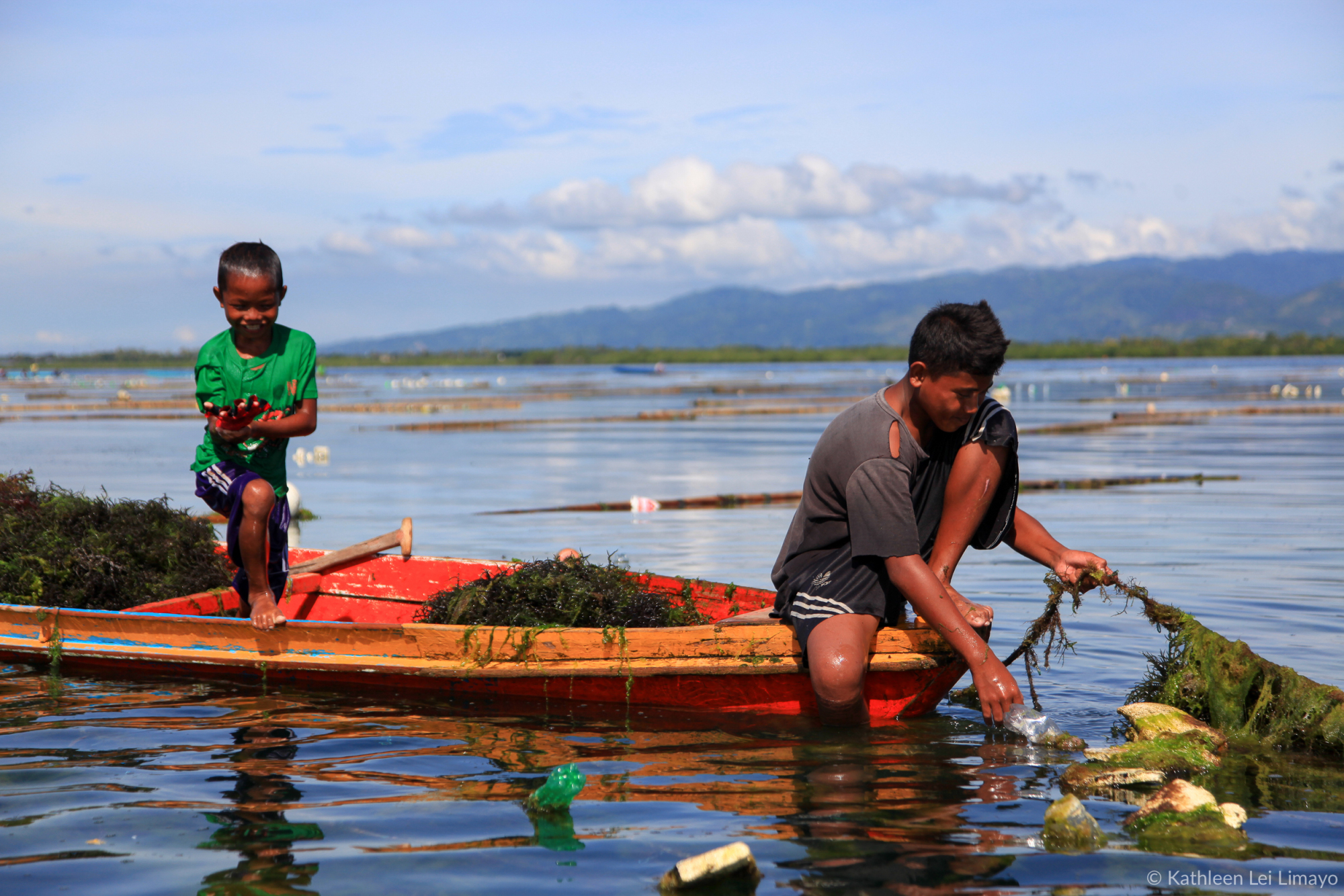
Musudrin and Leppeng harvest seaweeds.
“Before, there was a time when we lost
our capital of 20,000 Philippine Pesos
because strong currents from a typhoon
destroyed our seaweeds.”
-Saadiya Manglabi (Tigtabon resident)
Sea-level rise
Sea level rise pose a great threat to coastal areas in the Philippines. Sea-level rise could inundate low-lying communities and cause economic damage and potentially force human migration. 10
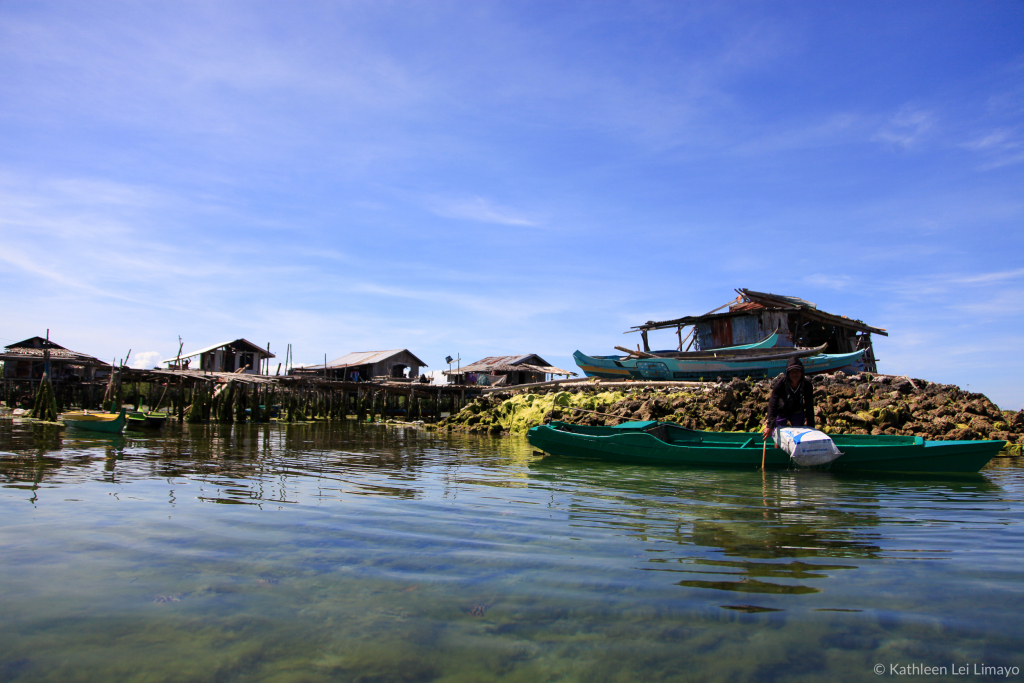
A fisherman docking his small boat in Tictabon island.
Over the years, residents have noticed the decreasing shoreline in Tigtabon island. To prevent sea encroachment to the houses, a seawall has been built by the local government. However, the residents still fear their houses will be submerged in water when natural calamities such as strong typhoons come to their island. As global sea level rise continue, coastal communities akin to Sama Badjao in Tigtabon are forced to adapt to water encroachment.
“Before, the sea was still 50 meters away from our houses even during high tides.
Now, the sea is only 35 meters away from the shore.” – Jimmy Manglabi (Fisherman and seaweed farmer)
Solar power and climate action
Tigtabon island didn’t have electricity ever since. However, residents bought solar panels in Zamboanga city to power their homes. Now, Tigtabon island is fully powered by solar energy. Despite the effects of climate change to Tigtabon, the residents of the island exhibit resilience and climate action through their use of renewable energy.
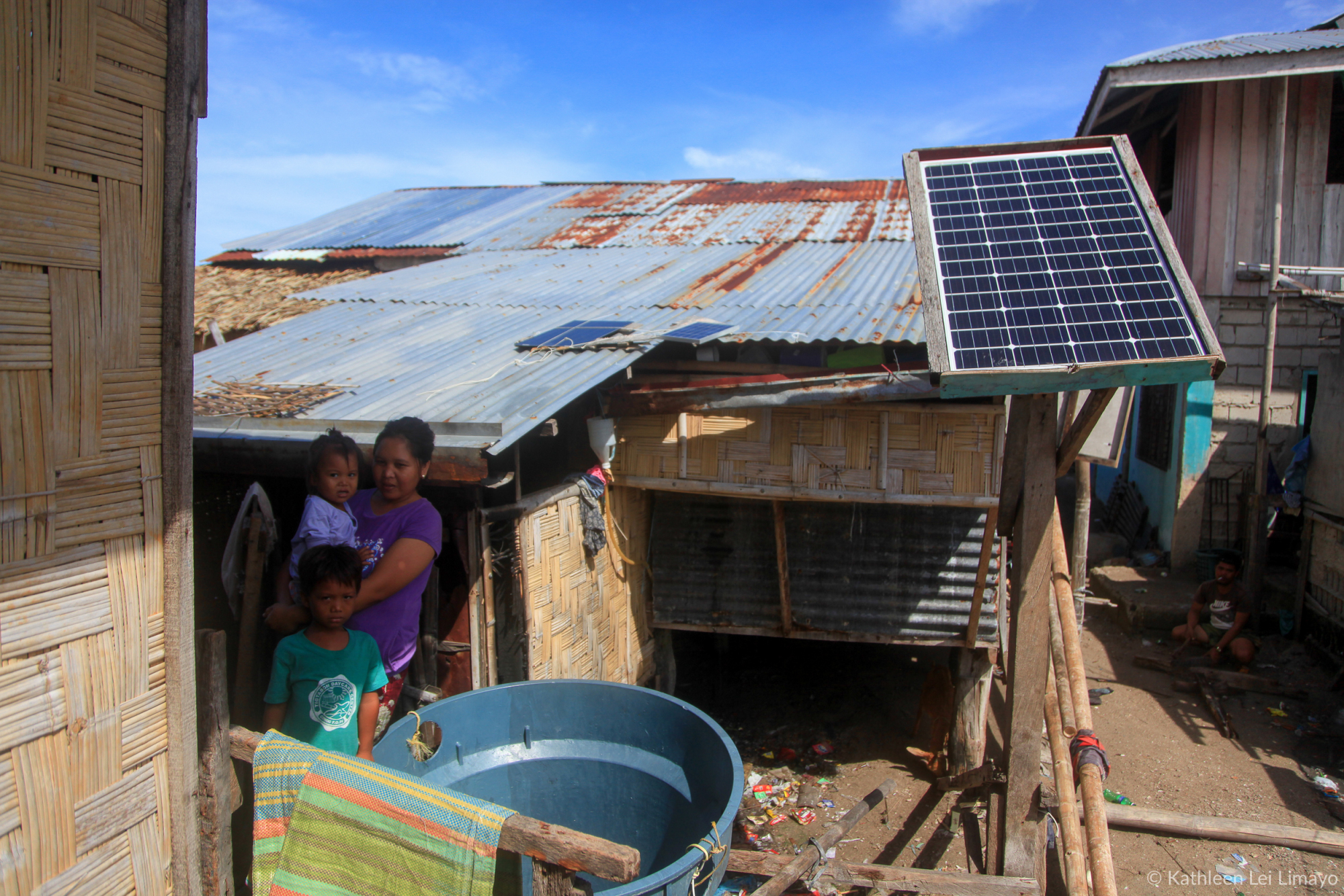
Saadiya’s family uses solar panel to power their house.
By choosing to use solar energy instead of generator sets, the Sama Badjao people of Tigtabon are building a low-carbon community.
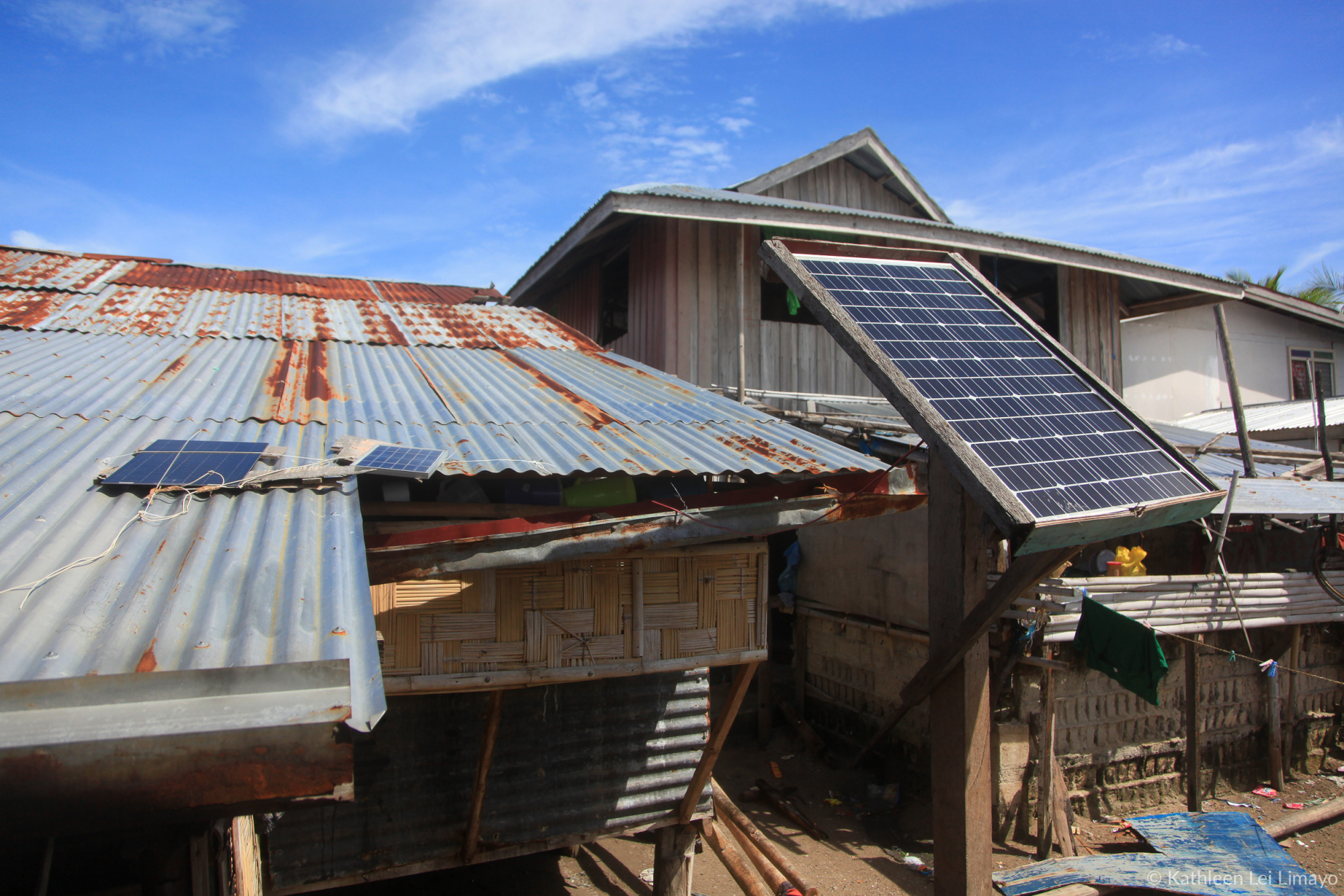
Small solar panels are installed at roofs of the houses in Tigtabon.
“Tigtabon island doesn’t have electricity ever since. It is really dark here at night so we bought solar panels in Zamboanga city… We are thankful because the energy coming from the sun provides us electricity.” – Saadiya Manglabi (Tigtabon island resident)
About the author
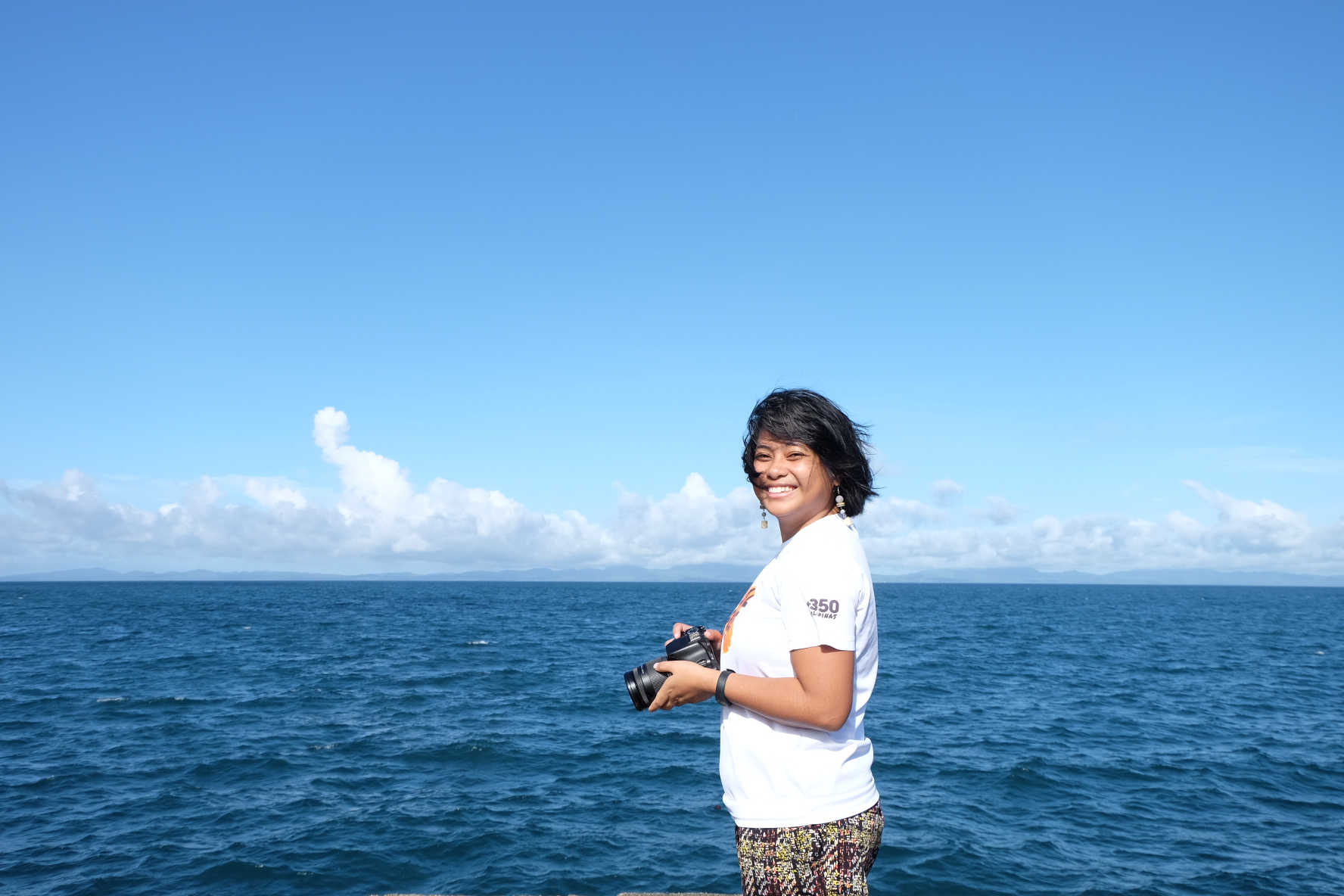
Kathleen Lei Limayo is a documentary filmmaker, photographer, and visual anthropologist that volunteers for 350 Pilipinas to provide video documentation and storytelling support for the work of the climate movement in the Philippines. Visit kathleenleilimayo.com to learn more about her work.
This multimedia documentary project was made possible through the Cambridge Climate Frontline Programme.
Join us!
Climate change is not just an environmental issue, or a social justice issue, or an economic issue — it’s all of those things at once. The only way to act is by working together. Sign up to join our movement.
Sources:
1 Nimmo, H. A. (1968). Reflections on Bajau History. Philippine Studies, 16(1), 32-59.
2 Hoogervorst, T. G. (2012). Ethnicity and aquatic lifestyles: exploring Southeast Asia’s past and present seascapes. Water History, 4(3), 245-265.
3, 6, 7, 8, 10 Cruz, R. V. O., Ali.o, P. M., Cabrera O. C., David, C. P. C., David, L. T., Lansigan, F. P., Lasco, R. D., Licuanan, W. R. Y., Lorenzo, F. M., Mamauag, S. S., Pe.aflor, E. L., Perez, R. T., Pulhin, J. M., Rollon, R. N., Samson, M. S., Siringan, F. P., Tibig, L. V., Uy, N. M., Villanoy, C. L. (2017). 2017 Philippine Climate Change Assessment: Impacts, Vulnerabilities and Adaptation. The Oscar M. Lopez Center for Climate Change Adaptation and Disaster Risk Management Foundation, Inc. and Climate Change Commission.
4Eckstein, D., Hutfils, M., Winges, M. (2018). Global Climate Risk Index 2019. Germanwatch.
5 United Nations for Indigenous Peoples. Climate Change. Retrieved from https://www.un.org/development/desa/indigenouspeoples/climate-change.html
9 Food and Agriculture Organization of the United Nations. Fishery and Aquaculture Country Profiles: The Republic of the Philippines. Retrieved from http://www.fao.org/fishery/facp/PHL/en
